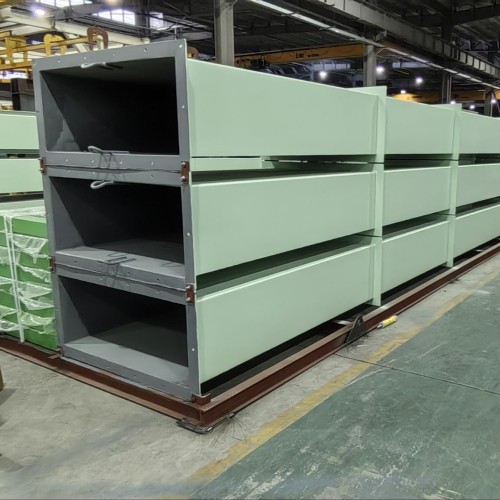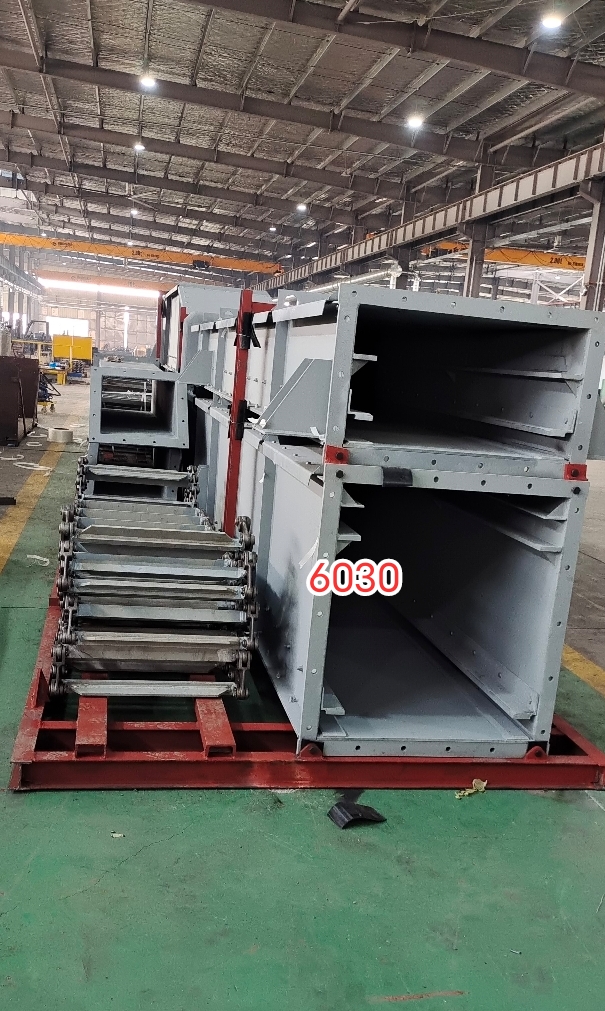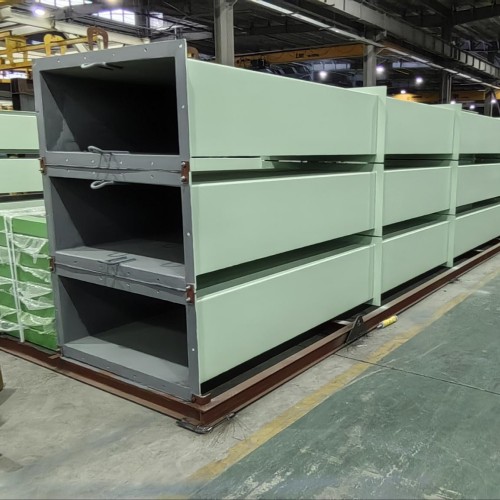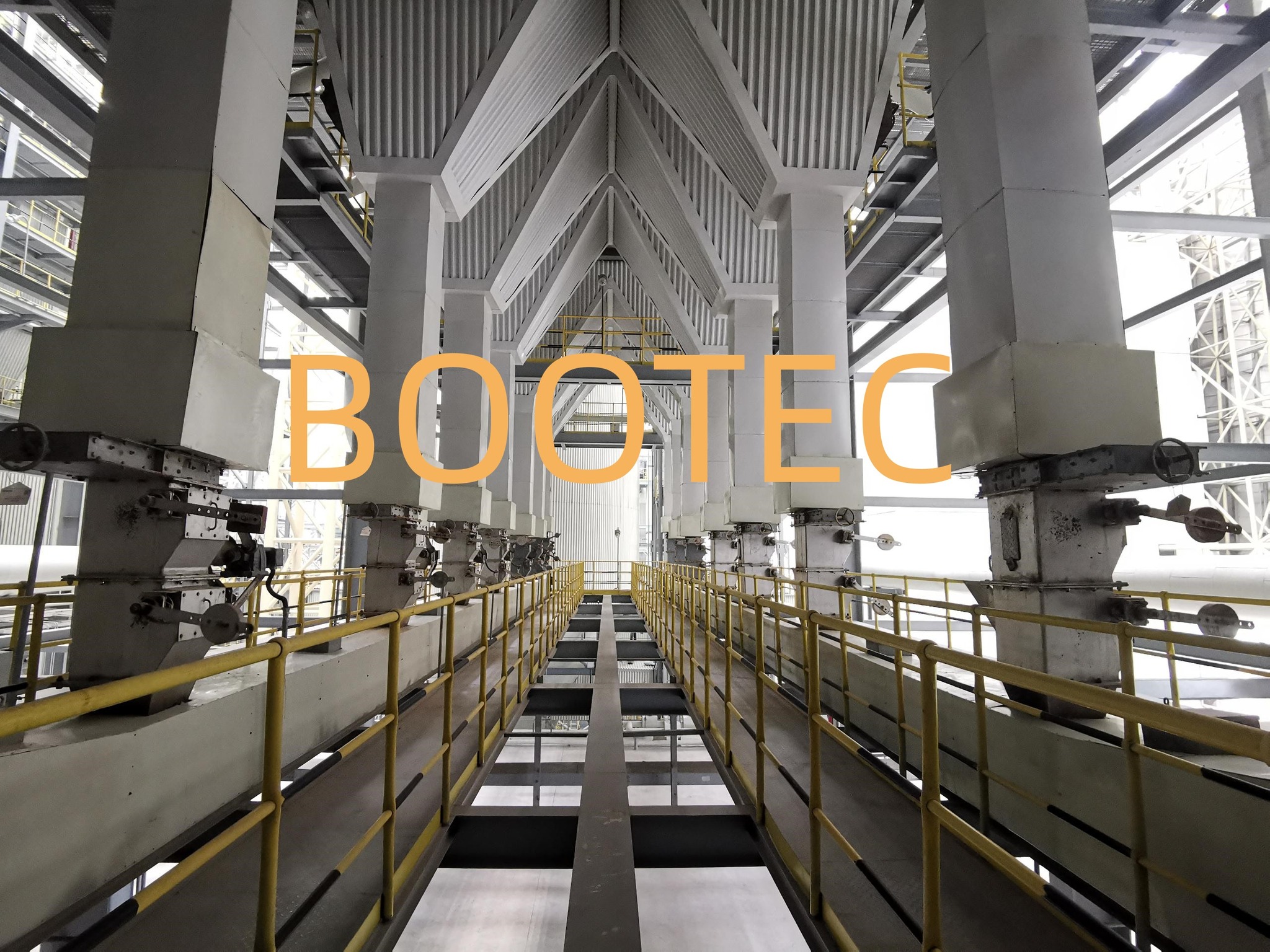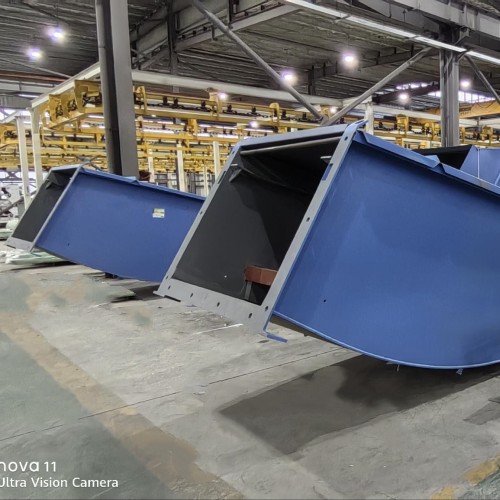
Heavy Duty Drag Chain Conveyor
Heavy Duty Drag Chain Conveyor
A Heavy Duty Drag Chain Conveyor is an industrial material handling system designed to move heavy, abrasive, and high-temperature materials such as bottom ash, fly ash, slag, cement, and scrap materials. These conveyors are typically used in demanding environments, like power plants, waste-to-energy plants, cement factories, and mining operations. The key features of these conveyors are their strength, capacity, and durability, making them ideal for handling large volumes of harsh materials with minimal maintenance.
Key Features of Heavy Duty Drag Chain Conveyors
- Durable Chain Mechanism:
- Heavy Duty Chains: The conveyor uses strong forged steel chains or alloy chains capable of withstanding high temperatures, heavy loads, and abrasive materials. This makes the conveyor suitable for applications where lighter conveyors might fail.
- Tough Materials: The chains and components are made from materials like high-strength steel, stainless steel, or heat-resistant alloys to ensure long service life even in extreme conditions.
- Heavy-duty Sprockets and Components: Sprockets, idlers, and bearings are designed for high load-bearing capacity and to withstand abrasive materials.
- High-Capacity Performance:
- Large Volume Handling: Heavy duty drag chain conveyors are designed to handle high-capacity materials, ensuring that large volumes of bottom ash, slag, or scrap materials are moved efficiently.
- Continuous Operation: These conveyors can run continuously, making them ideal for applications where consistent material movement is required, such as 24/7 operations in power plants.
- Efficient Material Movement:
- Drag Mechanism: The conveyor uses a drag chain with attached flights or scrapers that push the material along the trough. The material is dragged, not pushed, which minimizes the risk of material breakdown.
- High Throughput: Heavy-duty conveyors are capable of moving large volumes of material per unit time, which increases productivity and reduces bottlenecks in the production or waste handling process.
- Adaptable to Harsh Environments:
- High-Temperature Handling: These conveyors are built to handle hot materials like molten slag or bottom ash directly from combustion zones, often at temperatures of up to 800°C or more.
- Abrasion Resistance: The tough chains and durable troughs can withstand the abrasive nature of materials like bottom ash or cement without excessive wear.
- Corrosion Resistance: Stainless steel options or specialized coatings can protect against corrosion from wet materials or exposure to harsh chemicals.
- Dust Control and Safety:
- Enclosed Design: Many heavy-duty drag chain conveyors are designed with fully enclosed or partially enclosed housings to contain dust, ensuring a cleaner operation and compliance with environmental regulations.
- Sealed Mechanism: The chain mechanism is often sealed to prevent material spillage and ensure safe, dust-free operation.
- Modular and Customizable Design:
- Custom Lengths and Configurations: These conveyors are customizable to fit specific layout and capacity requirements. They can be designed for both horizontal and inclined installations to accommodate space limitations in the plant.
- Flexible Routing: Depending on the layout of the facility, these conveyors can be designed to move materials in multiple directions, including through tight spaces or over long distances.
- Energy Efficient:
- Low Energy Consumption: With the use of heavy-duty materials and optimized chain design, these conveyors are energy-efficient, ensuring that power consumption is kept to a minimum even when running at full capacity.
- Variable Speed Control: Some heavy-duty drag chain conveyors are equipped with variable speed drives, allowing the speed to be adjusted based on material flow and system requirements, improving energy efficiency.
Applications of Heavy Duty Drag Chain Conveyors
- Power Plants:
- Bottom Ash Handling: Drag chain conveyors are commonly used to transport bottom ash from the boiler furnace to the disposal or storage area. The system’s ability to handle high temperatures and abrasive materials makes it ideal for this application.
- Fly Ash Handling: For transporting fine fly ash collected from the flue gas system to silos or storage, these conveyors help maintain the flow of ash while minimizing dust emissions.
- Waste-to-Energy Plants:
- Ash and Slag Handling: In waste-to-energy (EfW) plants, drag chain conveyors are used to handle slag, bottom ash, and other waste byproducts of the combustion process, ensuring efficient and continuous material removal.
- Cement Industry:
- Material Transport: These conveyors are used for handling raw materials (like coal and limestone), cement powder, and finished products. Their durability makes them well-suited for the abrasive nature of cement materials.
- Scrap Handling: The conveyor can also handle waste material like scrap or clinker in cement manufacturing.
- Mining and Metal Processing:
- Ore and Slag Handling: In mining and metallurgy, drag chain conveyors are often used to transport slag, ore, and other byproducts of metal processing, especially in blast furnaces or foundries.
- Molten Metal Handling: In some cases, these conveyors are designed to safely transport molten slag or other hot metal byproducts directly from the furnace.
- Pulp and Paper:
- Wood Chip and Waste Handling: Heavy-duty drag chain conveyors can be used in the pulp and paper industry to handle wood chips, bark, or paper waste during production and recycling processes.
- Sugar and Agriculture:
- Bagasse and Byproducts Handling: In the sugar industry, drag chain conveyors are used to handle bagasse, a byproduct of sugar cane processing, and other agricultural waste materials.
Advantages of Heavy Duty Drag Chain Conveyors
- High Capacity: Can handle large volumes of material quickly, improving operational throughput.
- Durability: Built to last, even in harsh environments with abrasive, hot, and heavy materials.
- Low Maintenance: Continuous operation with minimal downtime due to durable materials and robust construction.
- Customizable Design: Can be adapted to different plant layouts and specific material characteristics.
- Safety and Compliance: Designed to minimize dust emissions and prevent spillage, ensuring safe and environmentally compliant operation.
- Energy Efficiency: Operates with optimized energy use, reducing operational costs.
Conclusion
Heavy Duty Drag Chain Conveyors are an essential component in many industrial operations, including power generation, waste-to-energy, cement manufacturing, and metal processing. Their ability to handle hot, abrasive, and high-capacity materials with durability and efficiency makes them a reliable choice for moving difficult materials like bottom ash, slag, and fly ash.
If you’re looking to integrate a Heavy Duty Drag Chain Conveyor into your facility, be sure to select one that meets the specific temperature, capacity, and material characteristics of your operation.
Would you like more specific information on configurations or suppliers for heavy-duty conveyors in your area?
